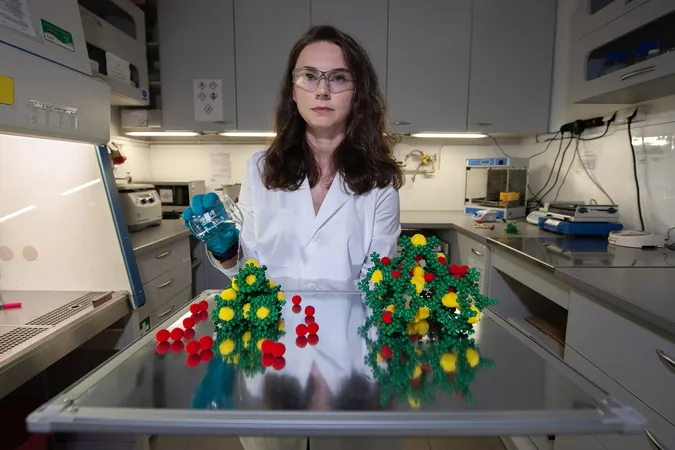
Revolutionary Self-Assembly Technique Leads to Groundbreaking Porous Crystals with Unique Gas Properties
2025-08-25
Author: William
A Breakthrough in Supramolecular Chemistry
In the realm of supramolecular chemistry, the creation of complex chemical systems through self-assembly is making waves. Researchers are increasingly focusing on the development of robust and adaptable molecular porous materials (MPMs), also known as porous molecular crystals (PMCs). These innovative materials are constructed using discrete molecules that bond through weak noncovalent interactions.
The Challenge of Crafting Robust Frameworks
Despite the progress in this field, creating durable porous frameworks driven by these noncovalent forces remains a formidable hurdle for scientists.
A New Method from Experts in Poland and Cambridge
Recently, a talented team led by Professor Janusz Lewiński from the Institute of Physical Chemistry at the Polish Academy of Sciences, in collaboration with Professor David Fairen-Jimenez from Cambridge University, unveiled a pioneering technique to synthesize a nanosized Ni(II) hydroxyquinolinato-carbonato cluster, known as [Ni10(μ6-CO3)4(L)12]. Their groundbreaking research has been published in the prestigious *Journal of the American Chemical Society*.
Dual Frameworks with Dynamic Properties
This remarkable decanuclear cluster can self-assemble into one of two distinct microporous frameworks, WUT-1(Ni) and WUT-2(Ni), depending on the crystallization conditions. Dr. Iwona Justyniak, co-author of the study, explained that transitions between these two polymorphs can be finely tuned through changes in temperature or exposure to specific organic solvent vapors, revealing a fascinating ability for the materials to recover their crystalline structure.
Exceptional Stability and Gas Adsorption Performance
Both porous materials exhibit impressive thermal and chemical stability under various conditions, including aerobic and aqueous environments. WUT-1(Ni) stands out with its remarkable gas absorption capabilities, showing a notable improvement in hydrogen uptake compared to its previously studied isostructural counterpart, WUT-1(Zn). It boasts one of the highest hydrogen absorption rates among noncovalent microporous materials.
Enhanced Selectivity in Gas Adsorption
On the other hand, the ultramicroporous WUT-2(Ni) framework's tighter voids enable it to selectively interact with gas molecules, showcasing exceptional preference for CO2 over CH4 and N2. Ph.D. student Katarzyna Sołtys-Brzostek, the study's lead author, remarked on how simply substituting Zn(II) with Ni(II) in these clusters not only improved their chemical stability but also significantly boosted the framework's capacity to engage with gas molecules.
Looking Ahead: Advancements in Porous Solid-State Materials
These findings highlight the crucial influence of metal centers in the self-assembly process of nanoclusters and the resulting properties of the microporous frameworks. The insights gained from this research are expected to significantly contribute to the advancement of sophisticated porous solid-state materials, paving the way for future innovations.









 Brasil (PT)
Brasil (PT)
 Canada (EN)
Canada (EN)
 Chile (ES)
Chile (ES)
 Česko (CS)
Česko (CS)
 대한민국 (KO)
대한민국 (KO)
 España (ES)
España (ES)
 France (FR)
France (FR)
 Hong Kong (EN)
Hong Kong (EN)
 Italia (IT)
Italia (IT)
 日本 (JA)
日本 (JA)
 Magyarország (HU)
Magyarország (HU)
 Norge (NO)
Norge (NO)
 Polska (PL)
Polska (PL)
 Schweiz (DE)
Schweiz (DE)
 Singapore (EN)
Singapore (EN)
 Sverige (SV)
Sverige (SV)
 Suomi (FI)
Suomi (FI)
 Türkiye (TR)
Türkiye (TR)
 الإمارات العربية المتحدة (AR)
الإمارات العربية المتحدة (AR)